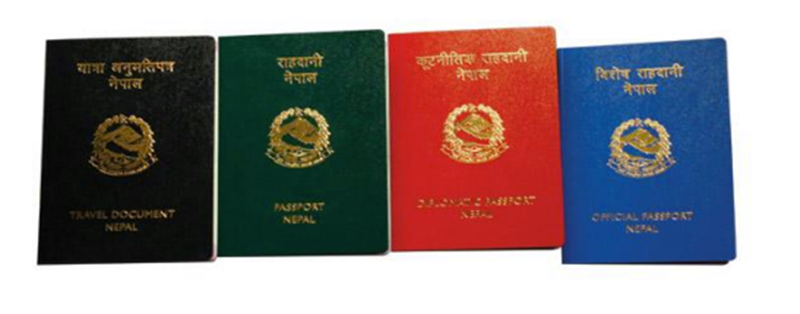Govt plans to substitute MRPs with e-passports from April 2020
Kathmandu, July 26
Following a recent Cabinet's nod, the Department of Passport (DoP) has begun laying the groundwork to start issuing e-passport from mid-April 2020.
Though the replacement of machine readable passports (MRPs) had been planned since past couple of years, a recent Cabinet meeting principally agreed to switch to the e-passport, providing legal ground for DoP to implement the plan, informed Ram Kaji Khadka, director general of DoP.
Following the Cabinet's approval, Khadka said that DoP is gearing up to hold three separate meetings with experts on three subject matters - to discuss technical specifications of e-passports, to conduct cost analysis of e-passports and to look into implementation of e-passport system.
Amid increasing cases of duplicate passports, Khadka said that such ill-practices will be less likely with e-passports as they incorporate sophisticated technologies.
Also known as biometric or digital passport, an e-passport is a traditional passport that has an embedded electronic microprocessor chip, which contains biometric information that can be used to authenticate the identity of the passport holder.
It uses contactless smart card technology, including a microprocessor chip (computer chip) and antenna (for both power to the chip and communication) embedded in the front or back cover, or centre page, of the passport. The passport's critical information is both printed on the data page of the passport and stored in the chip.
Public key infrastructure (PKI) is used to authenticate the data stored electronically in the passport chip making it expensive and difficult to forge when all security mechanisms are fully and correctly implemented.
“We have much groundwork to cover before we can introduce the e-passport system in the country. However, we plan to start issuing such chip-fitted digital passports from mid-April 2020,” informed Khadka.
As DoP still has 1.5 million MRP booklets, it plans to complete issuing passports under current format within two years. As per Khadka, DoP will not print MRPs after clearing the existing stocks.
“As soon as we finalise the technical specifications and cost analysis of e-passports, we will call for a global tender to implement it. We will gradually substitute MRPs with biometric passports,” added Khadka.
The government had stopped issuing handwritten passports after March 2010 and implemented the MRP system. So far, DoP has issued MRPs to 5.5 million Nepalis.
Khadka informed that DoP has been issuing almost 2,000 MRPs on an average every day at present.






